The far-flung country of Bosnia and Herzegovina, informally shortened to Bosnia, is tucked within the Balkan Peninsula in Europe. It is a country that seized my attention with just a picture; It was the quintessential image of Mostar depicted on postcards, one of the stone arch Ottoman bridges spanning across the emerald green Neretva River. The beauty was captivating. I felt compelled to see it with my own eyes.
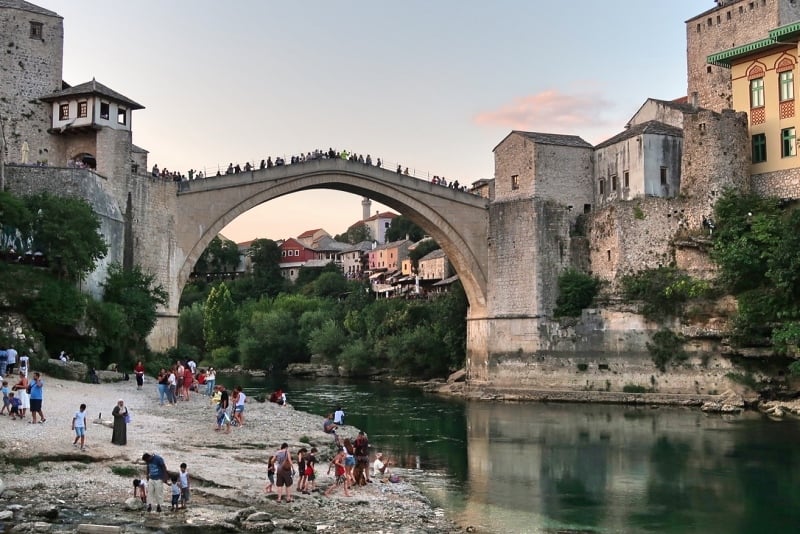
The Old Bridge in Mostar
And that I did.
After a wonderful ten-day trip to Bosnia in spring this year, I felt that it was a country I would love to return to — especially with my (Muslim) family, knowing that we will not encounter any problems with finding Halal food. With a stroke of luck, the opportunity came just four months after that, and I was accompanied by my Dad and sister to revisit some places I’d seen and also to discover new ones.
Bosnia & Herzegovina as a Muslim-friendly destination
Muslims, also known as Bosnian Bosniaks, comprise roughly half of the population in Bosnia, making them the largest single religious community within the country. The two other common religious groups are Eastern Orthodox Christians (Bosnian Serbs) and Roman Catholics (Bosnian Croats).
Islam was introduced to Bosnia by the Ottomans, who ruled the country for around 400 years up until 1878. Today, the still-functioning Emperor’s Mosque in Sarajevo — the first mosque built by the Ottomans following their conquest of the country — stands as a testament to the far-reaching influence of history on the people of today.
Finding Halal food in Bosnia is not a problem as there are many Muslim-friendly establishments around the country, including the two favourite destinations among travellers: Sarajevo and Mostar. There’s also no shortage of prayer spots within the country.
Why visit
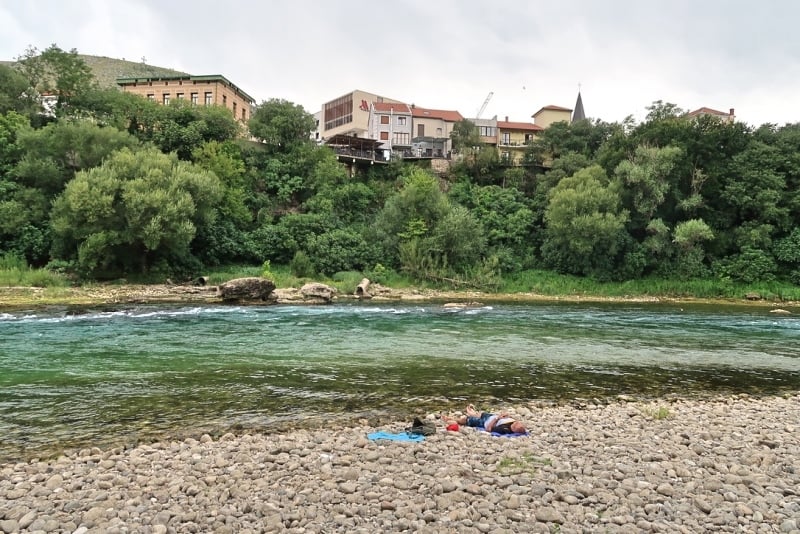
Relaxing on the secret riverside beach in Mostar
If I had to pick just one reason to visit Bosnia, I’d say it’s the beautiful nature. On my first trip to Bosnia, I was blown away by something simple: the gushing flow of the rivers. It was springtime, and the melted snow caused the rivers to swell. The Neretva River wasn’t as calm as I imagined; it was imbued with life, and I could sit for hours watching the ebb and flow of the clear waters. Perhaps I was particularly enchanted because I had arrived after two months in Iran, where the riverbed in Isfahan — where the Zayanderood once flowed — was cracked and bone-dry.
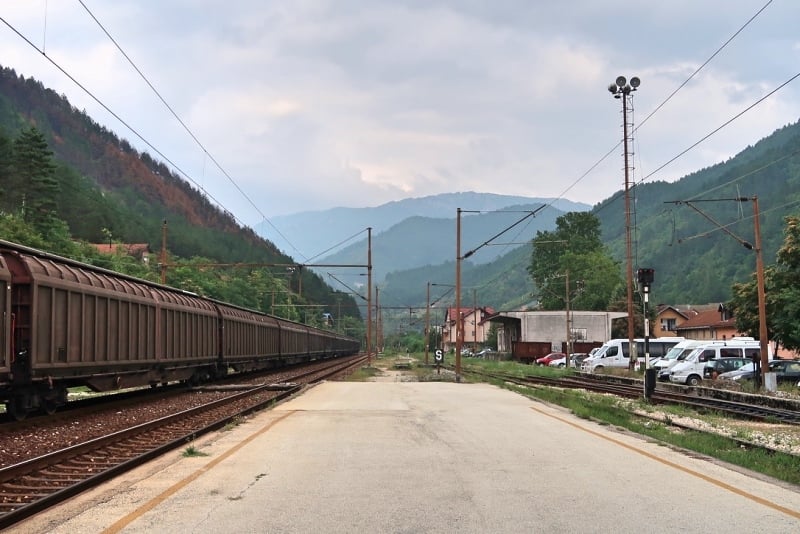
The train station in Konjic
Besides that, I appreciated how easy it was to travel around the country. Both Sarajevo and Mostar are small cities that can be explored on foot. A scenic 2.5-hour train ride links the two. The country is also well-connected by buses, and you can easily embark on day trips from Sarajevo to places like Visoko, home to the enigmatic Bosnian Pyramids, Travnik, an old Ottoman capital, and even as far as Jajce, which has a stunning waterfall at the edge of the town. In fact, Mostar can be visited on a day trip, too, but it’s worth staying overnight because there are affordable tours from Mostar that will take you to scenic places in the Herzegovina region of the country.
Where to go
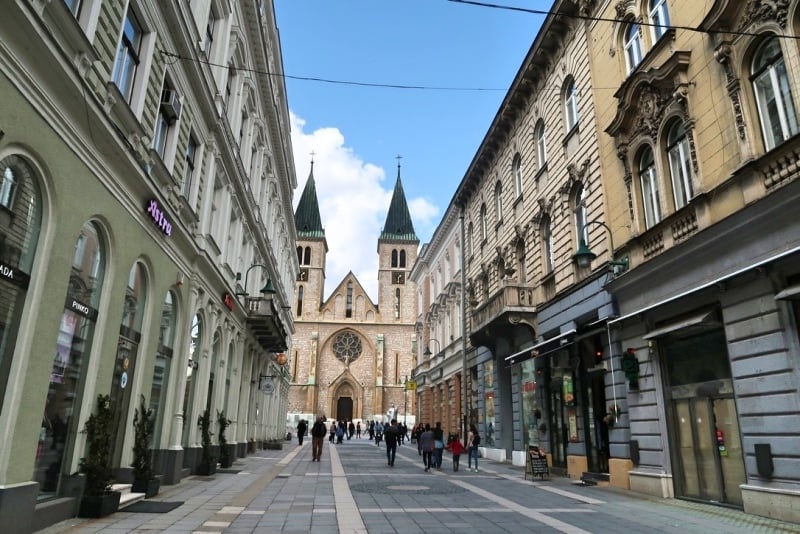
The Austro-Hungarian side of Sarajevo
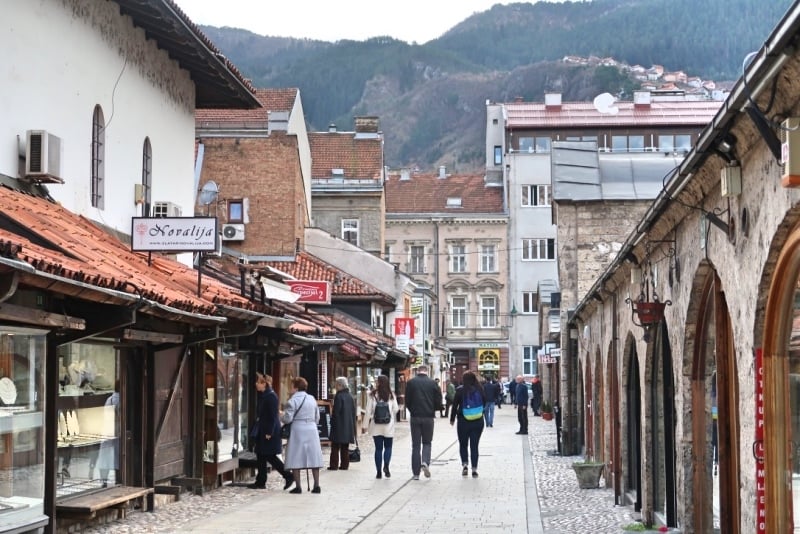
The Ottoman side of Sarajevo
Sarajevo, the capital of Bosnia, has a population of just over 275,000 within the city limits, which hints at its size. Indeed, the city is small and quaint. Despite that, I could stay a week — and indeed, I have stayed a week — and find new things to do every day. In the city centre of Sarajevo, there’s a spot where the message “Sarajevo Meeting of Cultures” is engraved on the floor. Standing there, you’d witness a cultural divide: the Ottoman buildings flanking the cobblestone alleys on one side, and the grand Austro-Hungarian architecture on the other side. Standing there, you’d feel as though the East collided with the West.
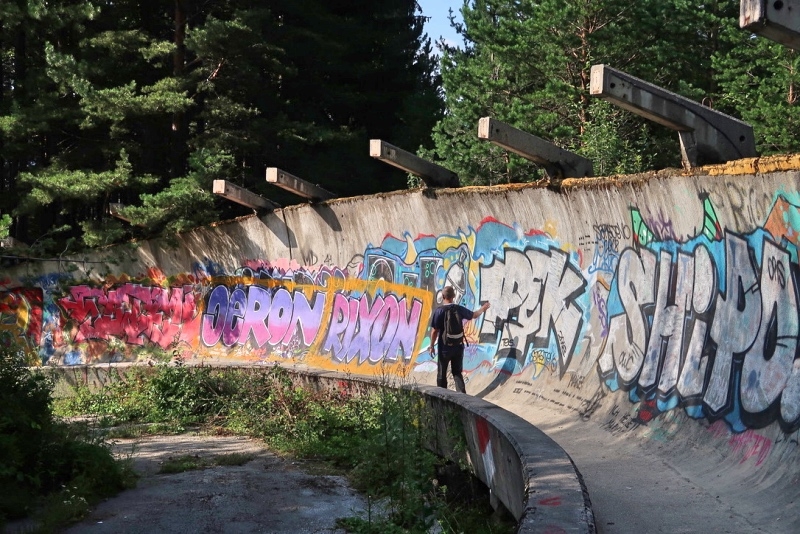
The Bobsled Track used in the 1984 Olympics held in Sarajevo
From that point, you could wander around the Old Town and browse copper handicrafts made by local artisans, visit the museums (don’t miss the War Childhood Museum), and of course, indulge in some local cevapi (grilled meat fingers) and Bosnian coffee. If time is short, I highly recommend going on the free walking tour to get an overview of the city and its history within two hours. Otherwise, get out of the Old Town; you can make a trip to the Sarajevo War Tunnel to glimpse into the siege of Sarajevo or ride the cable car and visit the now-abandoned Olympic Bobsled Track on the Trebević mountain. Before leaving the city, climb to the Yellow Fortress for panoramic views.
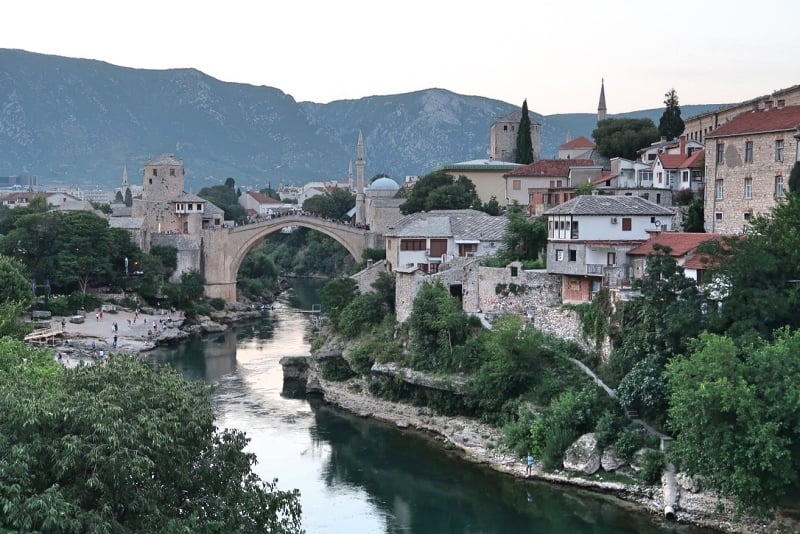
A scenic view of Mostar
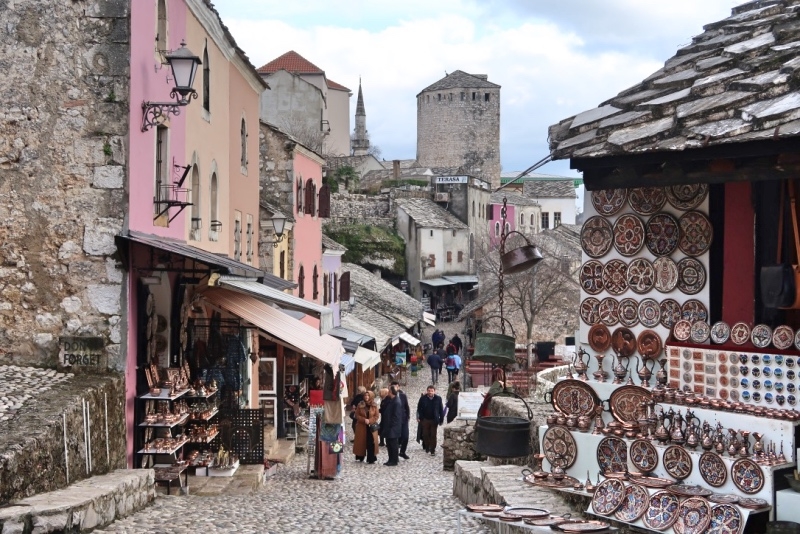
The souvenir shops that line the street leading to the Old Bridge
The most iconic landmark of picture-perfect Mostar is Stari Most, the old bridge from which a traditional diving competition is held every year in summer. Around the city, you’ll find buildings peppered with bullet holes — remnants of the war in the ’90s. But more apparent is the deluge of tourist-geared restaurants and shops in the carsija (bazaar) on both sides of the river. As I walked around Mostar, I could not help but snap multiple pictures of the bridge from different spots and angles. The Koski Mehmed Pasha Mosque, built in the Ottoman style, advertises itself as having “the best views of the bridge” on a sign outside. Visitors could climb to the minaret through narrow spiral steps and be the judge.
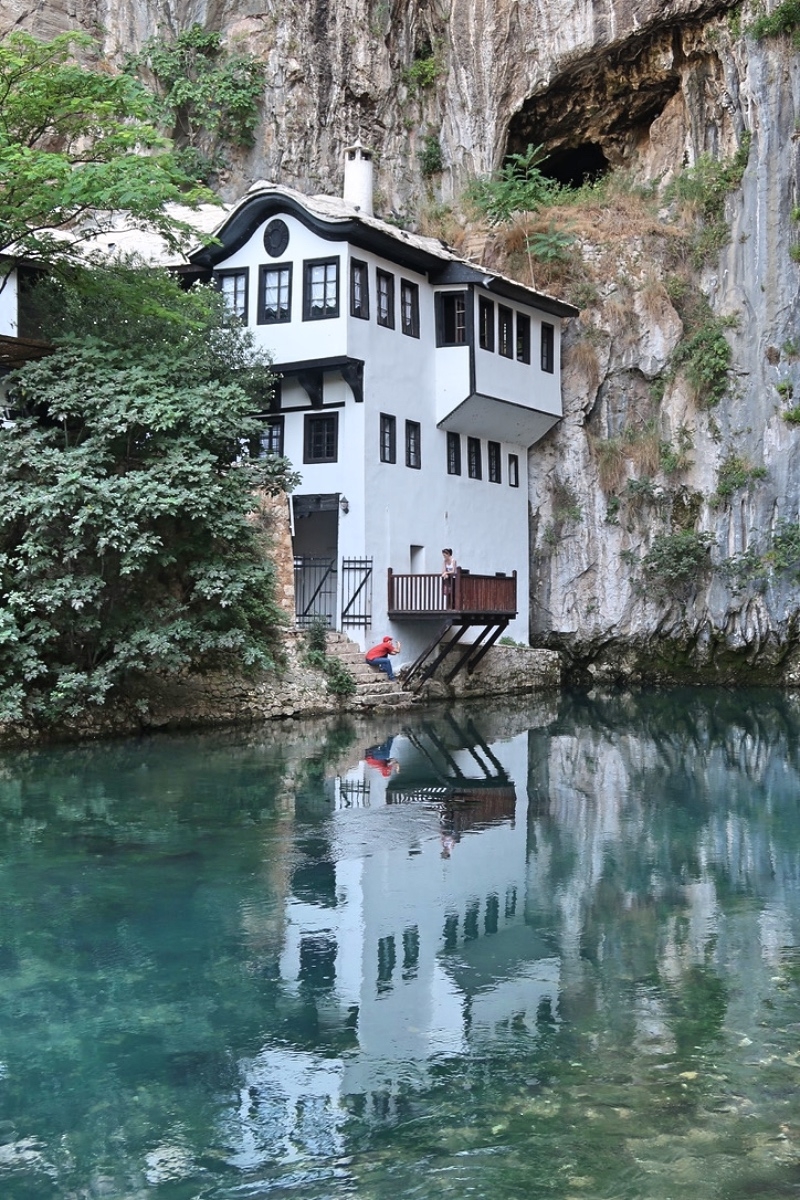
The tekija in Blagaj
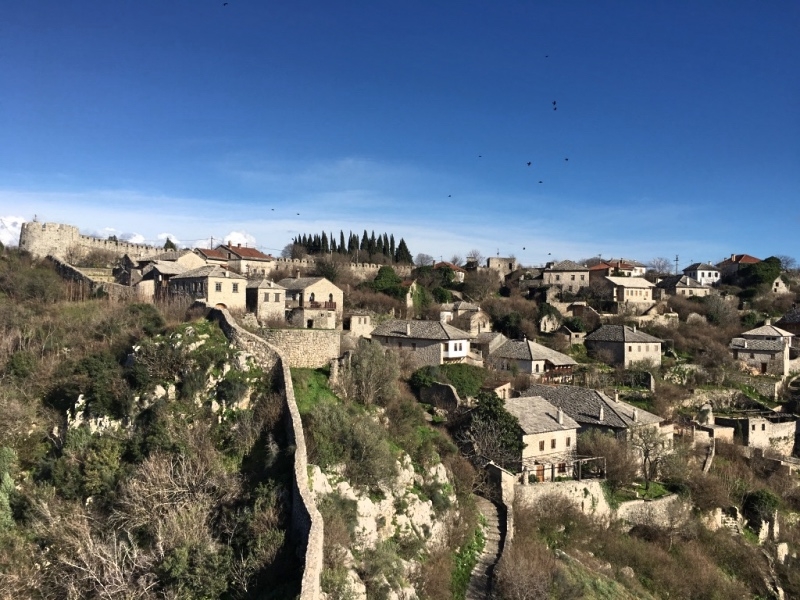
The view of Pocitelj from the fortress
Mostar receives plenty of day-trippers so the streets slowly empty in the evenings, leaving behind a handful of travellers with the luxury of time. Staying overnight is a great choice. The next day, you could make a day trip to Blagaj by bus or hop on a tour that combines Blagaj with the medieval town of Pocitelj, Kravice Waterfalls, and Medjugorje, a Catholic pilgrimage site.
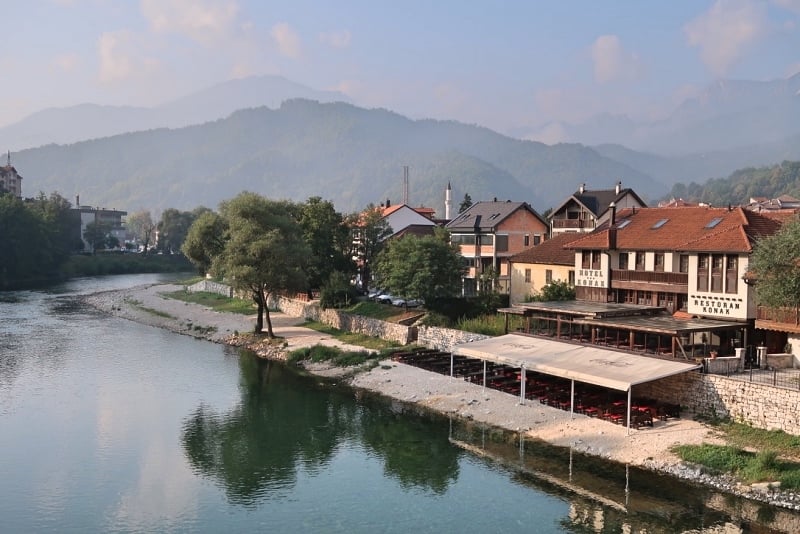
Tranquillity in Konjic
While most tourists stick to Sarajevo and Mostar, consider dropping by Konjic, which is tucked conveniently in between those two locations. Konjic is the base for whitewater rafting along the Neretva River, which flows through the heart of the small city. You could visit Tito’s Bunker, make a trip to the remote village of Lukomir, or simply let the day pass by while sitting in a riverside cafe.
Things to note
- Yes, Bosnia is safe — it has been two decades since the Bosnian War ended.
- Bosnia is not part of Schengen or the EU.
- The Bosnian Mark (KM) is the official currency. For a quick conversion, remember that 1 Euro is approximately 2 KM.
- Cash is king in Bosnia.
- Bosnian is the official language, along with Serbian and Croatian. Many young Bosnians can converse in English.
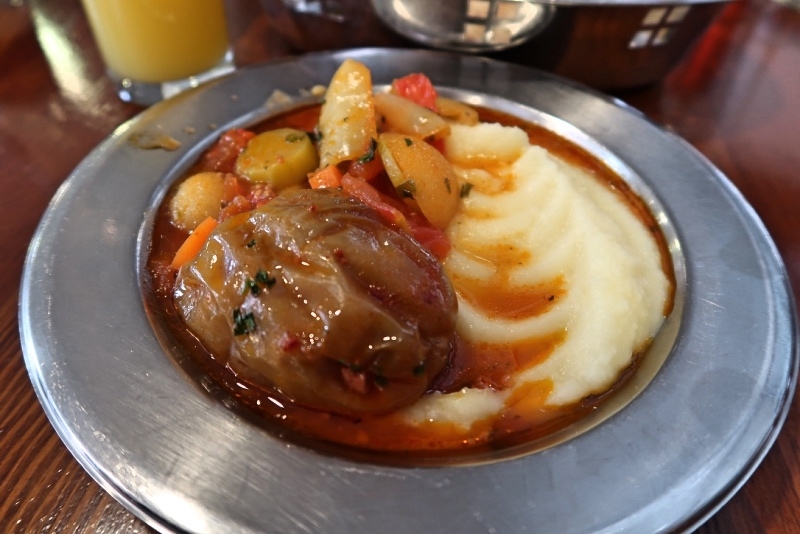
A plate of traditional Bosnian food from Ascinica Asdz, Sarajevo
Also, while Halal food is generally easy to find around the country, there are areas in Bosnia that are largely populated by non-Muslims — such as Republika Srpska in the north and the regions bordering Croatia — where pork is served and food may be non-Halal. On top of that, there is no religious establishment that issues Halal certification to eateries, so it’s always good to check with the staff before sitting down for a meal.
Enjoy Bosnia!
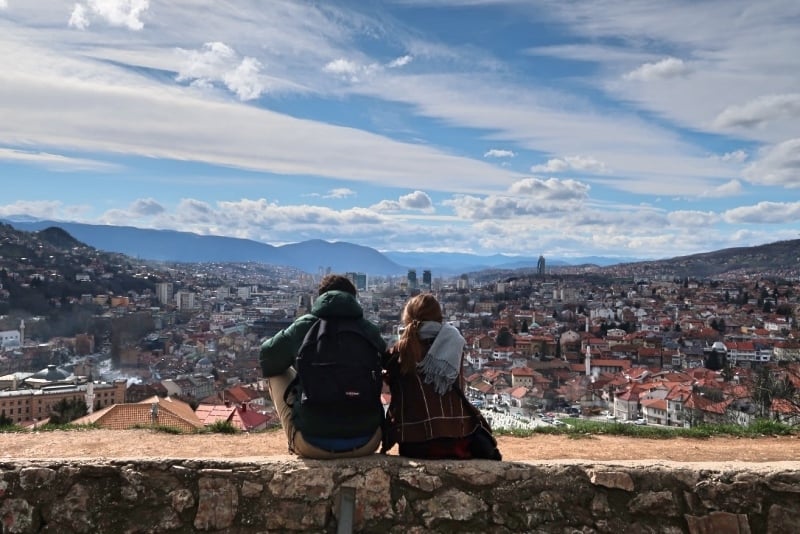
View of Sarajevo from the Yellow Fortress
With this brief guide, I hope that you’ll have a fantastic trip to Bosnia and Herzegovina.
Also read: Mostar: An Ancient Treasure That Belongs On Your European Itinerary





